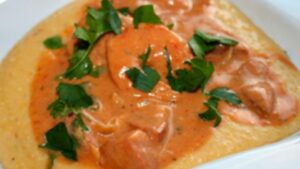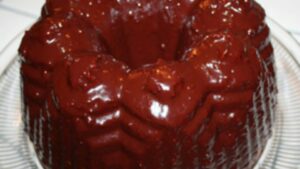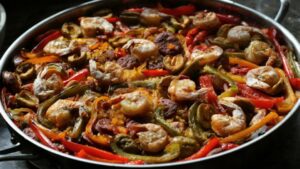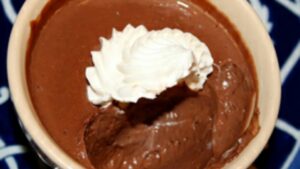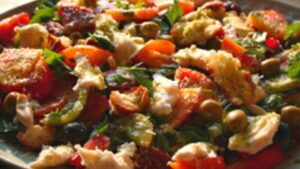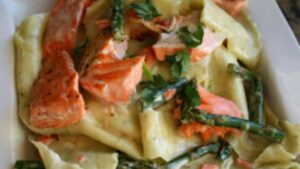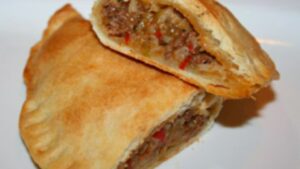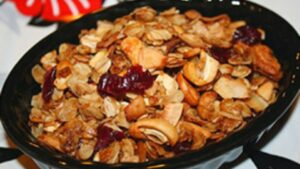Learn more about our products and how you can use them.
Faq's
What determines the health benefits of Olive Oils?
Polyphenols are a class of antioxidants found in a variety of foods. Recent studies indicate that these potent phenols are responsible for many of the health benefits associated with consuming fresh, high quality extra virgin olive oil. Phenols in olive oil decrease over time or when exposed to heat, oxygen, and light. That is why our olive oil is stored in air-tight, metal vats and sold in dark-tinted bottles. Consuming fresh, well-made olive oil with high polyphenol content is crucial when looking to obtain the maximum health benefit commonly associated with consuming extra virgin olive oil.
How do I know which Olive Oil is right for me?
It is difficult to compare taste unless you open several containers of oil at the same time—not something a consumer in a supermarket usually does. At Strand Olive Oils, you have the opportunity to taste a range of high-quality extra virgin olive oils and know the crush date and complete chemistry. Come visit our store and try as many extra virgin olive oils as you like; they represent extraordinary examples of unique quality and value impossible to duplicate in traditional supermarket brands.
What determines the quality of Olive Oils?
In addition to the origin of the fruit, other important variables in olive oil production include the ripeness at harvest, the span of time between harvest and milling, the temperature used for extraction, and storage methods. If these are not done correctly, the location of the olive grove becomes virtually meaningless.
Difference between virgin and extra-virgin Olive Oils?
The International Olive Oil Council defines these two grades of olive oil as follows:
- Virgin olive oil is produced by physical means with no chemical treatment. It has an acidity of less than 2% and is judged to have good taste.
- Extra-virgin olive oil comes from virgin oil production only. It contains no more than 0.8% acidity and is judged to have a superior taste. Extra Virgin olive oil accounts for less than 10% of oil in many producing countries.
Unfortunately, the United States is not a member of the International Olive Oil Council and, therefore, does not adhere to its retail grades. Therefore, terms such as “extra virgin” may be used in the US without legal restrictions
Difference between fused and infused?
“Fused” olive oil—or what is referred to as “agrumato” in Italy—is made by crushing ripe, sound olives with whole, fresh fruits, herbs, or vegetables at the time of crush. This process allows for the essential oils from the added ingredients to mingle with the oil from the olives. The wastewater is then centrifuged away, and the result is a bright, fresh, fused olive oil.
Infusing is the process of adding flavor to olive oil after it has been made. For some, it is simply an attempt to cover up poor-quality oil. But the infused oils at Strands Olive Oils are made with the freshest extra virgin olive oils available in our collection that are most aesthetically compatible with the natural products we use to flavor them. This dictates that the freshness and quality of our infused olive oils are second to none.
What is Balsamic Vinegar?
Balsamic is a vinegar resulting from the single fermentation of the grape must, which can only be called balsamic if it is made in the region of Emilia Romagna from specific grape varieties which are grown strictly in that region of Italy.
What Criterion determines the quality of Balsamic?
The highest quality balsamic in the world has similar traits and best manufacturing practices in common. Following are some of these traits:
- The vinegar is made from ripe, sound grapes picked at their peak.
- Only a small amount of barrel-aged wine vinegar from Modena is added, if any.
- No caramel color is used or needed.
- It must be cooked in kettles to naturally caramelize the grape sugar for complexity, natural mahogany color, and heighted natural density, which comes from a loss in water volume through reduction over heat.
- It is aged in fired-wood barrels that have been charred on the interior and that have been in continuous use for long periods of time. The residue from prior batches adds coveted complexity to the product. Additionally, aging in multiple types of wood barrels is desirable.
- Rapid loss of moisture through an open exchange of oxygen in the barrels is desirable for the oxidation of the product. The higher the density, the higher quality of the balsamic—which is evident in its complex taste and natural thickness.
Butter to Oil Conversion Chart
1 tsp = ¾ tsp |
1 tbsp = 2 ¼ tsp |
2 tbsp = 1 ½ tbsp |
¼ cup = 3 Tbsp |
⅓ cup = ¼ cup |
½ cup = ¼ cup + 2 tbsp |
⅔ cup = ½ cup |
¾ cup = ½ cup + 1 tbsp |
1 cup = ¾ cup |
Our Delicious Recipes
Most Popular Oils & Vinegar Pairings
| Blackberry Ginger Balsamic + Persian Lime EVOO |
| Blueberry Balsamic + Lemon EVOO |
| Butter Olive Oil + Maple Balsamic |
| Cherry Balsamic + California Toasted Almond Oil |
| Cherry Balsamic + Lemon EVOO |
| Chocolate Balsamic + Blood Orange EVOO |
| Chocolate Balsamic + Coconut Balsamic + Almond Oil |
| Chocolate Balsamic + Coconut White Balsamic |
| Chocolate Balsamic + Espresso Balsamic |
| Cilantro-Roasted Onion Olive Oil + Violet Balsamic |
| Cinnamon Pear Balsamic + Roasted Walnut Oil |
| Cinnamon-Pear Balsamic + Blood Orange EVOO |
| Coconut White Balsamic + Butter EVOO = Coco-butter |
| Coconut White Balsamic + Lemon EVOO |
| Coconut White Balsamic + Lime EVOO |
| Coconut White Balsamic + Roasted Sesame Seed Oil |
| Cranberry-Pear Balsamic + Almond Oil |
| Cranberry-Pear Balsamic + Blood Orange EVOO |
| Cranberry-Pear Balsamic + Persian Lime EVOO |
| Dark Chocolate Balsamic + Blood Orange EVOO |
| Dark Chocolate Balsamic + Chipotle EVOO |
| Espresso Balsamic + Blood Orange EVOO |
| Espresso Balsamic + Toasted Almond Oil |
| Fig Balsamic + Garlic EVOO |
| French Roasted Walnut Oil + Maple Balsamic |
| Garlic EVOO + Butter EVOO |
| Garlic EVOO + Sicilian Lemon Balsamic |
| Grape Fruit White Balsamic + Lemon EVOO |
| Grapefruit White Balsamic + Herbes de Provence EVOO |
| Gremolata Olive Oil & Sicilian Lemon White Balsamic |
| Honey Ginger Balsamic + Lemon EVOO |
| Honey Ginger White Balsamic + Persian Lime EVOO |
| Jalapeno Balsamic + Garlic EVOO |
| Jalapeno Balsamic + Lemon EVOO |
| Jalapeno White Balsamic + Chipotle EVOO |
| Jalapeno White Balsamic + Garlic EVOO |
| Lavender Balsamic + Herbes de Provence EVOO |
| Lavender Balsamic + Lime EVOO |
| Lemon White Balsamic + Tuscan Herb EVOO |
| Maple Bals. + Cinnamon Pear Bals. + Butter Olive Oil |
| Maple Balsamic + Blood Orange Agrumato Olive Oil |
| Mushroom Sage EVOO + Lemon Balsamic |
| Oregano White Balsamic + Garlic EVOO |
| Oregano White Balsamic + Lemon EVOO |
| Peach White Balsamic + Tuscan Herb EVOO |
| Pomegranate + Garlic EVOO |
| Pomegranate Balsamic + Persian Lime EVOO |
| Pumpkin Pie Spiced Balsamic + Roasted Walnut Oil |
| Raspberry Balsamic + lemon EVOO |
| Red Apple Balsamic + Hojiblanca EVOO |
| Red Apple Balsamic + Roasted Walnut Oil |
| Strawberry Balsamic + Basil EVOO |
| Strawberry Balsamic + Lemon EVOO |
| Tangerine Balsamic + Blood Orange EVOO |
| Thai Lemongrass-Mint + Basil EVOO |
| Thai Lemongrass-Mint Balsamic + Lemon EVOO |
| Thai Lemongrass-Mint Balsamic + Lime EVOO |
| Thai Lemongrass-Mint Balsamic + Toasted Sesame |
| Toasted Almond Oil + Raspberry Balsamic |
| Traditional Balsamic + ANY EVOO flavored or unflavored |
| Vanilla Balsamic + Blood Orange EVOO |
| Vanilla Balsamic + Chocolate Balsamic |
| Vanilla Balsamic + Maple Balsamic + Toasted Almond Oil |
| Vanilla Balsamic + Maple Balsamic + Toasted Almond Oil |
| Violet Balsamic + Lemon EVOO |


